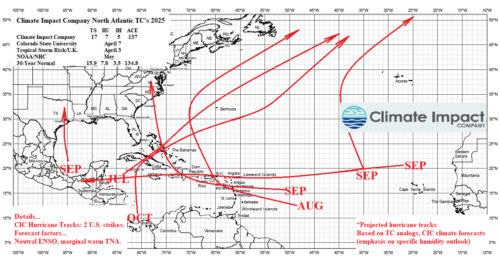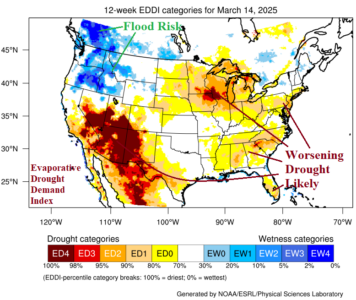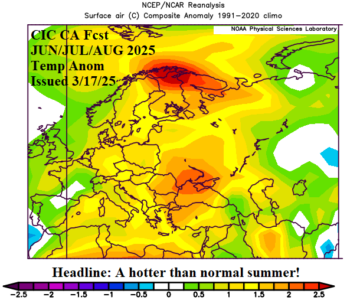03/21/2025, 12:00 pm EDT
The Climate Impact Company 2025 North Atlantic basin tropical cyclone season will maintain the 2016-24 active period. However, the 2025 forecast is slightly below the 2016-24 average activity except for the number of intense hurricanes. The forecast is slightly above the longer-term climatology.




